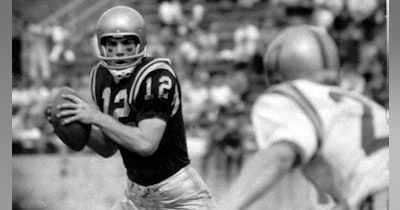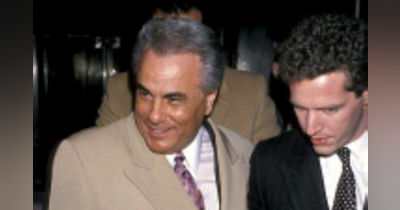Approaching the riverbank, I could not help but think of how serene this area was. Yet, when I closed my eyes, I could easily imagine the scene unfolding around me. The smell of burning wood and black powder, the sounds of groaning men passing by and muzzle fire echoing in the distance, and the din of the marching columns and horses nearby completed the imagery in my mind. I felt the need to turn away from the river and face the house the Zabriskie’s built along the water’s edge. Today, this home is well kept, manicured, and freshly painted, but something was missing out front. Nonetheless, my imagination filled that void and placed the old fox back on that porch. I could see his stoic outline and his gaze looking intently past me to the timber bridge watching the commotion occurring just yards away. While it was some time ago, being here conjured up all the emotions one would expect when you are reminiscing about one of history’s greatest leaders.
Aschatking, as it was once called, is where the Hackensack River narrows significantly from points south that lead into to the Newark Bay. During the American Revolution, this area, New Bridge Landing, served as a strategic bridge crossing for the Hackensack River. It is where, on November 20, 1776, General George Washington led his troops in retreat from the surrounding British forces. In his own words, Washington described this day as one of luck that allowed him to gain the bridge before the British, and in the end served to save his men.
As a result, New Bridge Landing is referred to in history books as the bridge that saved a nation. Yet, from a leadership perspective it provides another lesson. Several accounts of the day describe Washington as standing steadfast on the riverbank as his garrison crossed the Hackensack ultimately retreating to Newark. Within earshot of musket fire, he sacrificed his own safety to demonstrate to his men that he stood with them regardless of the challenges they all faced.
How many times as a leader have you found yourself in retreat? While the circumstances were surely different than what Washington experienced, nonetheless the pressure to achieve the mission may have been the same. Did you make a decision that did not turn out well? Did you implement a policy or strategy that was not favorable among your team? Did you find yourself on the wrong side of circumstances outside your control? What did you do?
While you would never know it today, considering the New Jersey State Police NIBIN program has become a national model, several years back that was not the case.[1]Complaints were coming from police departments around the state that the ten-month turnaround time to process NIBIN “hits” was just not meeting expectation in terms of generating investigative leads. Unfamiliar circumstances placed me and my team in the awkward position to address the problem. Not knowing much about ballistics or NIBIN at the time, we did what most commanders would do to address a problem. We called a meeting, and then another, and then another. After eight months, we could not figure out why nothing was changing. While the folks responsible for making improvements reported some progress, we still had complaints coming in from on high regarding turnaround times. At the same time, we also learned something even worse – agencies were taking their NIBIN evidence to other labs for faster processing. We felt like we were in full retreat.
Not sure how or why it happened, but we found ourselves spending time in the Ballistics Unit to observe the operation firsthand. It is here where incredible things began to happen. We came to understand that when NIBIN was first introduced into the lab it was squarely focused on an evidentiary perspective. There was no national movement to leverage NIBIN like it is today on developing investigative leads. We learned so much to help us question how the operation could be made more efficient and effective in its focus on supporting the evidentiary process by providing additional resources, training, and personnel. At the same time, working together we identified opportunities where, without sacrificing the evidentiary process, the unit could also adopt a premonitory capability that could turn around the NIBIN leads much more rapidly to provide investigators with actionable intelligence. The men and women in the unit were exceptional and demonstrated that once they understood the vision for change, they could meet the challenge. Over several weeks they plotted out their processes - found ways to bust bottle necks and bridge gaps where data could get caught in the cracks and presented management with a new way of doing business in a timely and sustainable manner. Their incredible efforts resulted in reducing a 10-month turnaround time on NIBIN leads to just 24 to 36 hours. More importantly, not only did the complaints from the consumers of their service go away, but the unit also developed cutting edge processes making them a leader in the field. Our lab was now a go-to location in our state, and, in many respects, across the country, for providing comprehensive crime gun intelligence in a timely manner.
While none of us claimed to be George Washington, what we did in this case to improve our NIBIN program in New Jersey was to model his form of leadership. We were present on the line for all to see. We took a first-hand account of the situation. We sought out information to understand the challenges surrounding the problem. We empowered our personnel to innovate and solve their own problems. This was all done by stepping back, visiting the rear, and showing we cared and were invested in their problems as well as the solutions.
Today, I still accompany folks to the Aschatking, often with Pat Schuber (a past guest on the RF Factor podcast). Pat, a local historian, provides the historical context related to the area and what it means for leaders today to consider within their own commands. Whether it be local law enforcement commanders, international counter terrorism leaders visiting the United States, or even young Scouts on a weekend leadership outing they all seem to come away with the same lesson provided by the Old Fox: A leader can have tremendous value on those being led just by being present during challenging times.
[1] Note: NIBIN stands for the National Integrated Ballistics Information Network. It is a program that is sponsored by the Bureau of Alcohol, Tobacco, and Firearms, and leverages the individual NIBIN labs across the country within municipal, state, and federal agencies. NIBIN offers law enforcement investigators information related to the association of fired cartridge cases left behind at a crime scene to other crime scenes as well as crime guns recovered from criminal possessors on the street.





